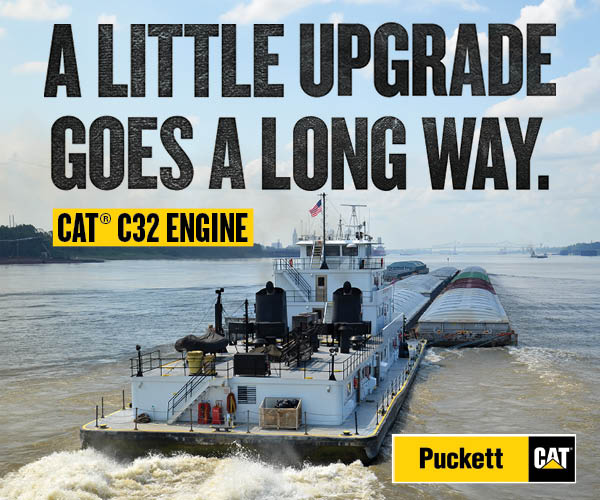Dredging Roundup – Latin America
Brazil
President Dilma Rousseff signed a bill into law June 5 that drastically reforms Brazil’s port regulations allowing more international companies to participate in upgrading and maintaining the nation’s port infrastructure. The reforms will also help usher in major investments in the ports—to the tune of $30 billion in coming years—including the dredging of virtually all of Brazil’s medium-sized and large ports. These investments aim to end the logistical bottlenecks the nation has become known for. Old regulations ruling Brazil’s ports for decades prohibited international companies from dredging or making large byways into port management there; the new law should open up both the dredging industry and port management to companies from the U.S. and elsewhere.
Uruguay
Uruguay has contracted a French company to construct and operate an offshore regasification plant to the west of the Port of Montevideo MercoPress reports. In May Uruguayan officials announced that French gas and power group GDF Suez SA had won the contract for which they will be paid $14 million a month for the next 20 years. In June Uruguayan energy director Ramon Mendez announced that dredging for the project would begin in the weeks to come. In addition to overseeing dredging and constructing the plant by 2015 Suez will also be responsible for building a breakwater and connecting the plant to the country’s gas pipeline network. The terminal will be capable of storing 267 million cubic meters (about 349 million cubic yards) of natural gas MercoPress reported.
Colombia
The Colombian government has announced an ambitious plan to launch its Port of Cartagena into the stratosphere of the shipping world. It plans to invest $1 billion into the port over two phases in the coming years in a project called Mega2017. With these investments it aims to make the port one of the 30 largest in the world with the capacity to move up to fi ve million containers a year according to the publication El Tiempo. The Caribbean port has already made large leaps in its capacity: in 1993 the port was handling just 96000 containers a year; last year it was close to 2.3 million reports the Global Post. As part of this expansion the port would be dredged from its current 41-foot depth to at least 50 feet in order to accommodate the larger ships anticipated to be traversing the world’s oceans after the Panama Canal is expanded.
Jamaica
The Port Authority of Jamaica hopes to use proceeds from the privatization of the Kingston Container Terminal to fund the dredging of the Kingston Harbour. As IDR reported in its March/April issue the natural harbor at Kingston is currently about 46 feet deep but government offi cials seek to dredge it to 56 feet. However offi cials were still contemplating how to find financing for the project. The Jamaica Gleaner reported that the Port Authority is pushing for the speedy privatization of the container terminal so it can use the proceeds for the dredging project which it would like to complete by 2015 when the expanded Panama Canal is expected to open and new megaships will begin looking for deep harbors to call in.
Panama
IHC Merwede has offi cially delivered its backhoe dredge Alberto Aleman Zubieta to the Panama Canal Authority (ACP) the second large dredge it has delivered for use in the canal in recent years. The backhoe dredge which was named for the former longtime administrator of the authority was developed specifi cally to operate in the canal’s Gaillard Cut where it will dredge blasted rock and soil as the authority continues its project to expand the canal. The dredge was used for a 30-day trial period in April and then was officially turned over to the ACP. IHC Merwede previously delivered the cutter suction dredge Quibian 1 to the authority.
Brazil
Major dredging and improvement projects to the Port of Tubarão concluded in May allowing the port to begin fully loading massive iron ore ships for the first time according to a press release by Brazilian mining company Vale. The port had been dredged from a depth of 74 feet to 83 feet work that took 22 months and avoided interrupting port activities. That expansion was conducted in order to allow Valemax ships—iron ore carriers with a capacity for 400000 metric tons and a draft of 75 feet—to be fully loaded. Until the expansion was completed the Valemax ships were only partially loaded.
Venezuela
Conflict is brewing over the exact state of the dredging project on Venezuela’s Rio Guaire. The country’s Noticias 24 is reporting that while the country’s minister of the environment has announced the completion of a long-awaited dredging project on the river a leader of the opposition political party Primero Justicia claims the work was not done. The director gave the news crew a tour of the river and pointed to areas where sedimentation had formed islands in the river but had not been dredged or cleared.
Mexico
The Mexican Ministry of Communications and Transport (SCT) has issued a tender for supervision of the dredging of the Port of Tecolutla in the state of Veracruz. The dredging will be conducted in the silt catchment pit in that port. The submission of proposals will be on July 22 and the ruling will be announced July 29; the work will begin on August 1 and is expected to last 135 days.



